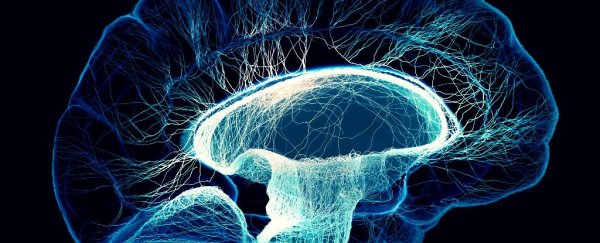It's impressive enough that our human brains are made up of the same 'star stuff' that forms the Universe, but a wild study published back in 2016 suggests that this might not be the only thing the two have in common.
Just like the Universe, our brains might be programmed to maximise disorder – similar to the principle of entropy – and our consciousness could simply be a side effect, the paper suggests.
The quest to understand human consciousness – our ability to be aware of ourselves and our surroundings – has been going on for centuries. Although consciousness is a crucial part of being human, researchers are still grappling with where it comes from, when it starts, and why we have it.
But the 2016 study, led by researchers from France and Canada, puts forward a new possibility: what if consciousness arises naturally as a result of our brains maximising their information content? In other words, what if consciousness is a side effect of our brain moving towards a state of entropy?
Entropy is basically the term used to describe the progression of a system from order to disorder. Picture an egg: when it's all perfectly separated into yolk and white, it has low entropy, but when you scramble it, it has high entropy - it's the most disordered it can be.
This is what many physicists believe is happening to our Universe. After the Big Bang, the Universe has gradually been moving from a state of low entropy to high entropy, and because the second law of thermodynamics states that entropy can only increase in a system, it could explain why the arrow of time only ever moves forwards.
So researchers decided to apply the same thinking to the connections in our brains, and investigate whether they show any patterns in the way they choose to order themselves while we're conscious.
To do this, a team from the University of Toronto and Paris Descartes University used a type of probability theory called statistical mechanics to model the networks of neurons in nine people's brains - including seven who had epilepsy.
Specifically, they were looking at synchronisation of neurons - whether neurons were oscillating in phase with each other - to figure out whether brain cells were linked or not.
They looked at two datasets: first they compared the connectivity patterns when participants were asleep and awake; and then they looked at the difference when five of the epileptic patients were having seizures, and when their brains were in a normal, 'alert' state.
In both situations, they saw the same trend - the participants' brains displayed higher entropy when in a fully conscious state.
"We find a surprisingly simple result: Normal wakeful states are characterized by the greatest number of possible configurations of interactions between brain networks, representing highest entropy values," the team wrote.
This led the researchers to argue that consciousness could simply be an "emergent property" of a system that's trying to maximise information exchange.
Before we get too carried away, there are some big limitations to this work - primarily the small sample size. It's hard to spot any conclusive trends from only nine people, particularly as everyone's brains responded slightly differently to the various states. At this stage, it's also mostly just speculation.
Physicist Peter McClintock from Lancaster University in the UK, who wasn't involved in the research, told Edwin Cartlidge over at Physics World at the time that the results were "intriguing", but need to be replicated in a larger number of subjects, including experiments during other brain states, such as while patients are under anaesthesia.
But the study is a good starting point for further research, and hints at a possible new hypothesis for why our brains tend to be conscious.
We're only just beginning to understand how the brain's organisation might affect our consciousness, but it's a pretty fascinating rabbit hole to fall down. And a nice reminder that we're all connected by the laws that govern the Universe.
The research was published in Physical Review E.
A version of this article was originally published in January 2018.
